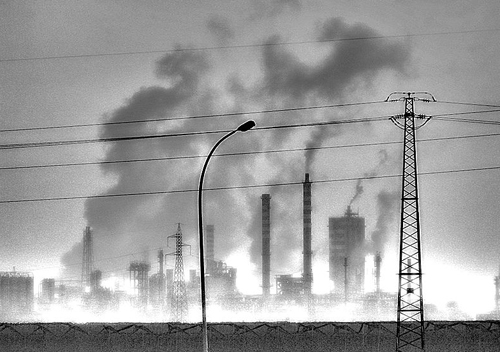 According to the latest data from World Health Organisation (WHO) air pollution in the world is the cause of 7 million premature deaths: more than four of these are attributable to indoor pollution, especially in developing countries, while the rest are attributable to air pollution commonly understood.
According to the latest data from World Health Organisation (WHO) air pollution in the world is the cause of 7 million premature deaths: more than four of these are attributable to indoor pollution, especially in developing countries, while the rest are attributable to air pollution commonly understood.
In Europe it is estimated that premature deaths resulting from air pollution amount to 870mila and fine particles (suspended particles with a diameter less than 2.5 micrometers) continues to be the main killer. If we consider the reduction in life expectancy, resulting from anthropogenic pollution with particulate matter, WHO notes that this reaches the highest levels in the Po Valley and the area around the Benelux.
A new study, just published in Nature, assesses the health effects of particulate matter in the world, and through a chemical model of global transportation, identifies different sources of PM2.5 in the atmosphere. The relative weight of the various sources of PM2.5 and precursor changes according to population, economic structures and productive technologies available etc.
The results emerging from the study allow us to draw, in the world, a kind of ranking of the main sources responsible for the premature deaths (summarized below in order of importance).
- Use of energy for commercial and civil purposes.
- Farming and livestock (which release NH3 from farms and the use of fertilizers; NH3 reacts in the atmosphere to form sulfate particles and ammonium nitrate).
- Production of energy.
- Industrial activities.
- combustion of biomass.
- Vehicle traffic.
The importance of this new study is the ability for legislators to organize increasingly targeted policies of reduction of PM2.5 levels depending on the sources most responsible for the different areas of the planet.
Further information
- Lelieveld, J., J.S. Evans, M. Fnais, D. Giannadaki and A. Pozzer (2015), The contribution of outdoor air pollution sources to premature mortality on a global scale. Nature, 525, 367-371.
- WHO Regional Office for Europe, OECD. Economic cost of the health impact of air pollution in Europe: Clean air, health and wealth. Copenhagen: WHO Regional Office for Europe, 2015.